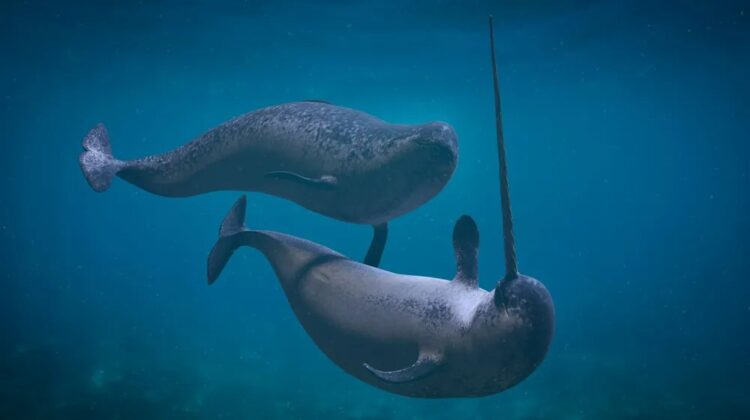
The elusive narwhal, with its legendary spiraled tooth and shy demeanor, is a species that has rarely graced the confines of aquariums. The reasons behind this scarcity are rooted in the unfortunate outcomes of two notable attempts in North America, both marked by calamity and tragedy.
The first endeavor took place in 1969 at the New York Aquarium in Coney Island, where a young narwhal named Umiak was introduced into captivity. Umiak, a calf, was captured by Inuits and placed in a tank alongside a female “white whale,” likely a beluga whale, as its surrogate mother. Despite efforts to ensure its well-being, Umiak succumbed to pneumonia less than a year after arriving at the aquarium, leaving a void of sorrow.

The second attempt occurred in 1970 at the Vancouver Aquarium in Canada. Motivated by a desire to generate public interest in the elusive species and aid in their conservation, director Murray Newman led a team on two unsuccessful narwhal-hunting expeditions. Eventually, a young male narwhal named Keela Luguk was acquired from Inuit hunters. However, the joy of the achievement was short-lived, as within months, all narwhals in captivity at the Vancouver Aquarium had tragically perished.
The question arises: why do narwhals fare so poorly in captivity compared to their close relatives, the beluga whales? The answer may lie in their exceptional sensitivity. The iconic narwhal tusk, filled with 10 million nerve endings, serves as a sophisticated sensory organ, detecting subtle changes in temperature, pressure, and particle gradients. Studies indicate that narwhals are exceptionally sensitive to human-made noise, and even a passing ship can significantly disrupt their behavior.

In the wake of these failed attempts and growing awareness of marine mammal welfare, it is unlikely that the world will witness another endeavor to place a narwhal in an aquarium. Recent shifts in public perception, fueled in part by documentaries like “Blackfish,” which shed light on the practices of SeaWorld and captive orcas, have led to a diminishing appetite for keeping whales in captivity.
As we reflect on these troubled tales of narwhal captivity, it becomes evident that these majestic creatures, with their unique adaptations and sensitivities, are best appreciated in the vast expanses of their natural habitat rather than confined within the limitations of an aquarium.

Leave a Reply